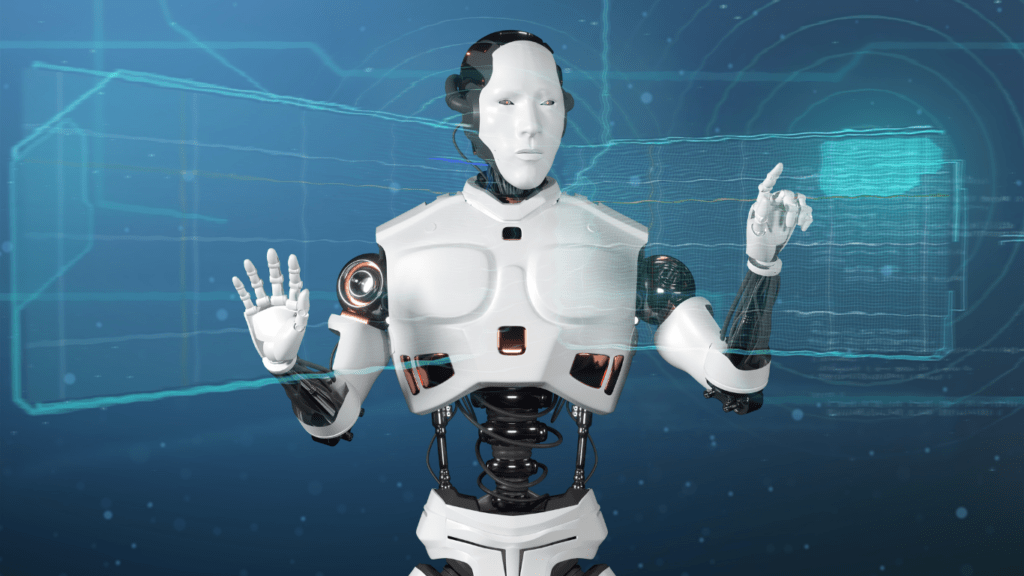Understanding Automation in Business
Automation is revolutionizing the business world by transforming traditional methods and workflows.
What is Automation?
Automation refers to using technology to perform tasks with minimal human intervention. It’s implemented through software and machinery designed to handle repetitive and time-consuming jobs. Examples include automated customer service systems, robotic process automation (RPA), and AI-driven data analysis tools. These technologies not only improve efficiency but also reduce errors, allowing employees to focus on more strategic tasks.
Evolution of Automation in Business
The concept of automation in business has evolved significantly over the decades. Initially limited to manufacturing with basic mechanization in the early 20th century, it now spans various sectors. In the 1980s, the introduction of computer-aided design (CAD) and computer-aided manufacturing (CAM) systems revolutionized production lines. Today, advanced technologies such as:
- artificial intelligence (AI)
- machine learning (ML)
- Internet of Things (IoT)
drive automation. These tools enable real-time data processing, predictive analytics, and adaptive control mechanisms. Businesses that adopt these innovations stay ahead by optimizing processes, enhancing product quality, and increasing overall agility.
Benefits of Automation
Automation offers numerous advantages for businesses, driving growth and competitive edge. Let’s explore the key benefits.
Increased Efficiency
- Automation significantly boosts efficiency.
- By automating repetitive tasks such as data entry, scheduling, and inventory management, employees can focus on higher-value activities like strategic planning and creativity.
- Automation tools like Robotic Process Automation (RPA) can execute tasks faster and with fewer errors than humans, accelerating overall productivity.
- According to McKinsey, implementing automation processes can increase productivity by 20-30%.
Cost Reduction
One major advantage of automation is cost reduction. Automated processes reduce the need for manual labor, lowering labor costs and minimizing the risk of human error, which can be costly. Automation minimizes downtime by maintaining consistent production rates. For example, automated customer service systems, such as chatbots, reduce operational costs by handling multiple inquiries simultaneously. A report from Deloitte mentions that businesses integrating automation can see average cost reductions of 15%.
Improved Accuracy
Automation enhances accuracy in various business processes. Automated systems eliminate the possibility of human error in data processing, ensuring high-quality outputs. For example, in financial services, automated systems can handle complex calculations and ensure compliance with regulations, reducing the likelihood of mistakes. Furthermore, machine learning algorithms can analyze vast amounts of data to provide accurate predictions and insights, guiding better decision-making. According to Gartner, businesses using automated accuracy tools can achieve error reductions of up to 75%.
Automation’s benefits—from increased efficiency and cost reduction to improved accuracy—highlight its critical role in the future of business.
Key Automation Technologies

Automation technologies are transforming business operations, driving efficiency, reducing costs, and enhancing accuracy. The most impactful technologies include Artificial Intelligence, Robotic Process Automation, and Machine Learning.
Artificial Intelligence
Artificial Intelligence (AI) refers to computer systems designed to perform tasks usually requiring human intelligence. These tasks include recognizing speech, making decisions, and identifying patterns. AI enhances business processes by automating complex decision-making and data analysis, saving time and improving consistency. For example, AI-powered customer service chatbots can handle multiple inquiries simultaneously, providing instant support and freeing up human agents for more complex tasks.
Robotic Process Automation
Robotic Process Automation (RPA) involves using software robots or “bots” to automate highly repetitive and rule-based tasks. These bots can log into applications, enter data, perform calculations, and even extract insights from reports. RPA enhances operational efficiency by reducing the time workers spend on menial tasks. For instance, bots can process invoice payments, reducing manual effort and virtually eliminating errors. Businesses adopting RPA report average productivity increases of approximately 20%–30%.
Machine Learning
Machine Learning (ML) is a subset of AI focusing on developing algorithms that allow systems to learn from and make predictions based on data. ML algorithms improve over time as they are exposed to more data. This technology is crucial for predictive analytics, enhancing decision-making and strategic planning. For example, ML in e-commerce can analyze customer behavior to predict purchasing patterns, enabling personalized marketing and inventory optimization. Implementing ML solutions has led to improved forecast accuracy of up to 50% for many retailers.
Each of these technologies plays a critical role in shaping the future of business, offering solutions that streamline processes and enhance productivity.
Industries Most Affected by Automation
Automation’s impact extends across various industries, leading to significant transformations in operational efficiency and cost savings. Below are the top sectors feeling the effects of this technological shift.
Manufacturing
Manufacturing heavily incorporates automation, increasing production speed and reducing errors. Automated assembly lines and robotic arms now handle repetitive tasks, improving precision and consistency in product quality. According to the International Federation of Robotics, there were 3 million industrial robots in use globally by 2020, indicating the widespread adoption of automation in manufacturing. Companies like Tesla use AI-powered robots to assemble vehicles, resulting in faster production times and fewer defects.
Healthcare
Automation is revolutionizing healthcare, enhancing patient care and administrative efficiency. Robotic surgery systems like Da Vinci perform precise surgical procedures, reducing recovery times and minimizing surgical risks. Additionally, AI-driven diagnostic tools assist doctors in identifying diseases earlier by analyzing medical imaging with high accuracy. For example, IBM’s Watson Health can analyze vast amounts of medical data quickly, providing clinicians with actionable insights. Automated systems also streamline administrative tasks such as appointment scheduling and billing, allowing healthcare providers to focus more on patient care.
Finance
In finance, automation enhances accuracy, risk management, and customer satisfaction. AI algorithms process and analyze large data sets to detect fraudulent activities, improving security. Automated trading systems execute trades at optimal times, maximizing profits and minimizing losses. For instance, JP Morgan’s COIN program uses machine learning to review legal documents, completing in seconds what once took thousands of hours. Chatbots powered by AI handle customer inquiries around the clock, offering timely assistance and improving client engagement.
Each of these industries experiences significant transformations due to automation, driving efficiency and innovation.
Challenges and Considerations
Adopting automation in business comes with its set of challenges and considerations. It’s crucial to address these issues to leverage automation’s full potential.
Security Concerns
Automation introduces significant security concerns. Automated systems handling sensitive data require robust security measures to prevent data breaches. For instance, in 2020, a notable increase in cyberattacks targeted automated systems, necessitating advanced cybersecurity protocols.
Job Displacement
Automation leads to job displacement across various sectors. Automating repetitive tasks means workers in these roles face redundancy. A 2021 study indicated that 30% of jobs in sectors like manufacturing and retail could be automated by 2030.
Scalability Issues
Automating at scale often presents challenges. Smaller businesses might struggle with the initial costs and technical expertise required for large-scale automation. According to a 2022 report, 50% of small enterprises cited scalability as a significant barrier to adopting automation technologies.


